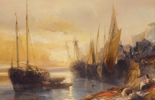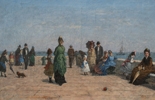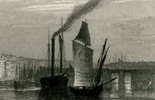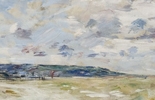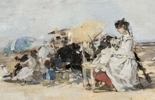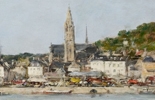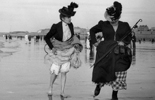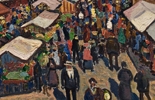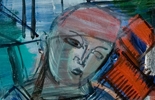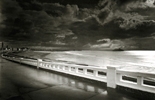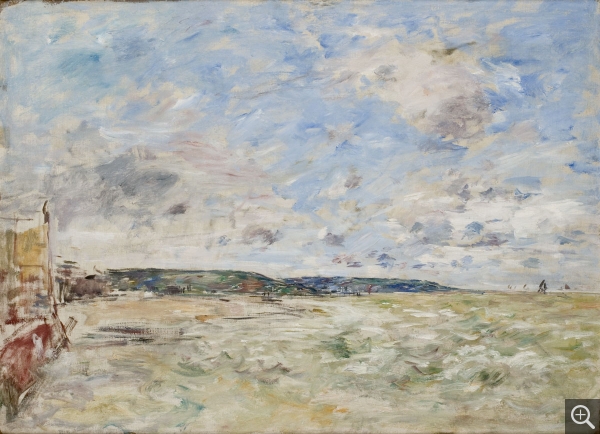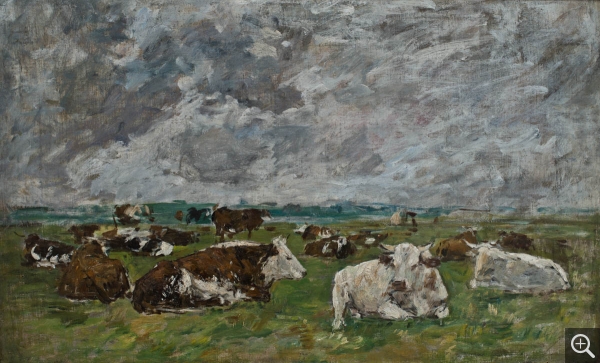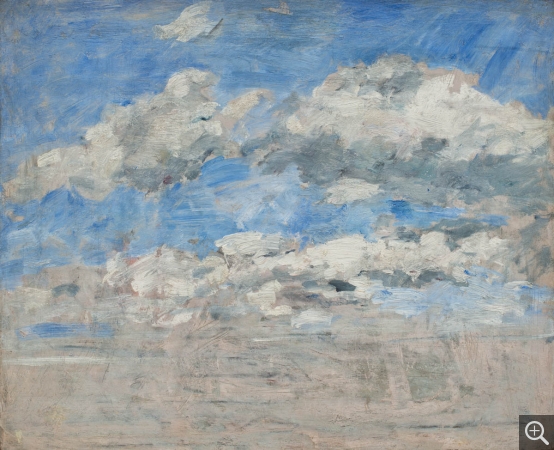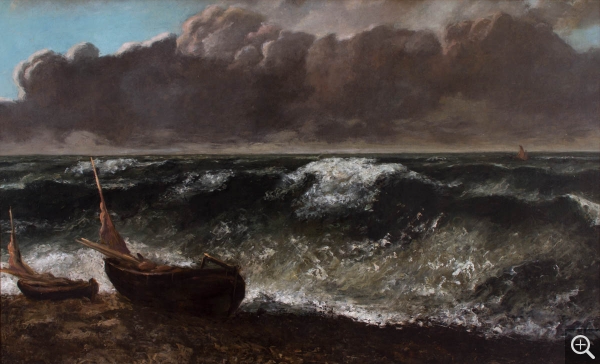L’estuaire de la Seine, l’invention d’un paysage
The Seine estuary, with its distinctive light and landscape that widens before melting into the endless sea, was the setting for the invention of what art critics would refer to as "la nouvelle peinture" (new painting). In the 1850s, artists in search of nature flocked to the mouth of the Seine with the help of new rail links (Le Havre in 1847, Honfleur in 1860) that meant Paris was just a few hours away from the sea.
To the north of the estuary, Le Havre was regarded as a port in the throes of modernization, an economically thriving city graced since 1845 with a museum that quickly garnered the support of wealthy collectors involved in trade at the port. To the south of the estuary, Honfleur was a small, picturesque port set against a backdrop of green countryside.
A native of Honfleur who worked as a youth in Le Havre, Eugène Boudin played a fundamental role by providing information to artists who came to discover the region and putting them in contact with one another. The Saint-Siméon farm on the edge of Honfleur became a place for young artists like Jongkind, Courbet and Daubigny to meet with Boudin, paint together outdoors, and explore new avenues. Surrounded by apple trees, the inn afforded a splendid view over the bay.
Every summer, it became the gathering place for a great many artists, a locus of artistic creation and the seat of a simple, community lifestyle. The hedged fields with their green pastures and herds of cattle provided countless subjects for the painters. But here where the land, sea and river met and revealed the ever-changing effects of the sea and sky, the painters focused their attention on the most changeable elements: the sky and its clouds, the sea and its waves. Boudin strove his entire life to capture the clouds, while Courbet invented "seascapes" on the Normandy coast—departing from traditional "marine" painting to create landscapes in which the composition focused increasingly on the elusive character of the wave, attaining the power of abstraction.
To the north of the estuary, Le Havre was regarded as a port in the throes of modernization, an economically thriving city graced since 1845 with a museum that quickly garnered the support of wealthy collectors involved in trade at the port. To the south of the estuary, Honfleur was a small, picturesque port set against a backdrop of green countryside.
A native of Honfleur who worked as a youth in Le Havre, Eugène Boudin played a fundamental role by providing information to artists who came to discover the region and putting them in contact with one another. The Saint-Siméon farm on the edge of Honfleur became a place for young artists like Jongkind, Courbet and Daubigny to meet with Boudin, paint together outdoors, and explore new avenues. Surrounded by apple trees, the inn afforded a splendid view over the bay.
Every summer, it became the gathering place for a great many artists, a locus of artistic creation and the seat of a simple, community lifestyle. The hedged fields with their green pastures and herds of cattle provided countless subjects for the painters. But here where the land, sea and river met and revealed the ever-changing effects of the sea and sky, the painters focused their attention on the most changeable elements: the sky and its clouds, the sea and its waves. Boudin strove his entire life to capture the clouds, while Courbet invented "seascapes" on the Normandy coast—departing from traditional "marine" painting to create landscapes in which the composition focused increasingly on the elusive character of the wave, attaining the power of abstraction.
- Eugène BOUDIN (1824-1898), Open Sky with Clouds over Trouville, ca. 1896, oil on canvas, 59.5 cm x 81.5 cm. © MuMa Le Havre / Florian Kleinefenn
- Eugène BOUDIN (1824-1898), Studies of Cows, ca. 1881-1888, oil on canvas, 43.1 x 69 cm. © MuMa Le Havre / David Fogel
- Eugène BOUDIN (1824-1898), Study of Clouds, Blue Sky, ca. 1888-1895, oil on wood, 37 x 46 cm. © MuMa Le Havre / David Fogel
- Gustave COURBET (1819-1877), The Wave, 1869, oil on canvas, 71.5 x 116.8 cm. © MuMa Le Havre / Charles Maslard


